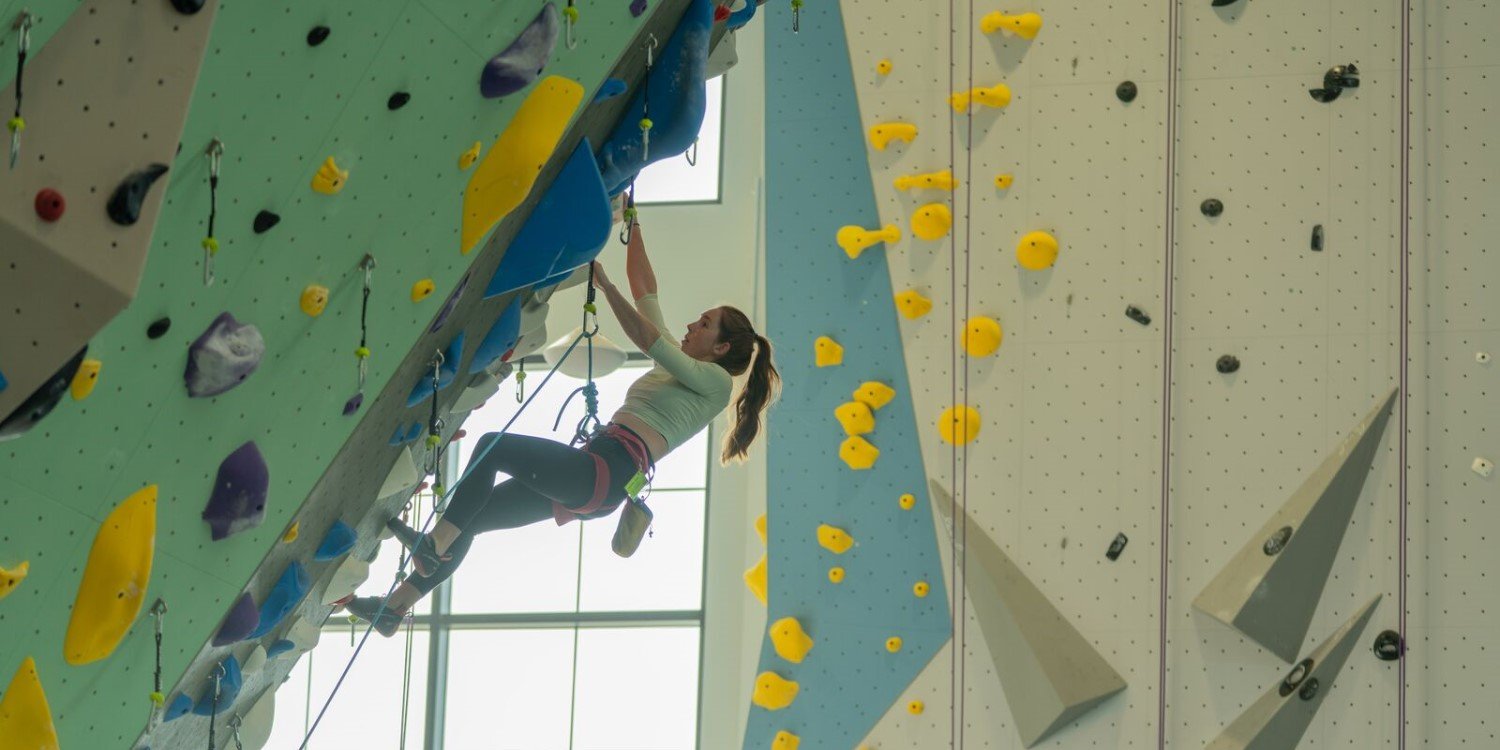How to get over your fear of climbing overhangs
here's how to overcome the overhang mental game
When it comes to climbing terrain, few things seem to inspire as much fear and intimidation as the overhang wall.
So if you find yourself quickly walking past the Gnarwall at Rockville, Megaprow at Dallas the Hill, the Constant Wall in Sunnyvale, or the Iceberg in Portland to climb more vertical terrain or you’ve ever questioned whether you have enough upper body strength climb through steep terrain (you probably have more than you think), keep reading!
One of our awesome climbing coaches, Ezra Park, has some great advice for ya.
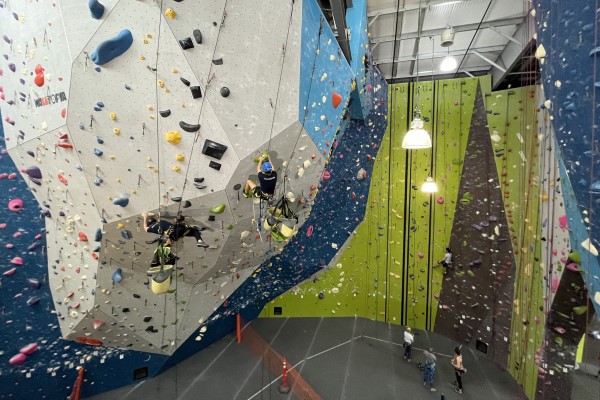 Portland's Iceberg Wall
Portland's Iceberg Wall
identify why climbing overhangs seems scary
First, try to figure out where your fear comes from to get to the root of the problem. Are you scared of the fall? Maybe it's a particular move that has a crazy swing towards the top? Is it because you lack experience climbing (and potentially falling) on steeper terrain? Are you worried your fingers aren’t strong enough to handle the holds, whether they’re big jugs or tiny crimps? Maybe you feel like you’re not strong enough?
Taking a second to think through what spooks you about overhangs is a great first step to figuring out how to overcome your fear.
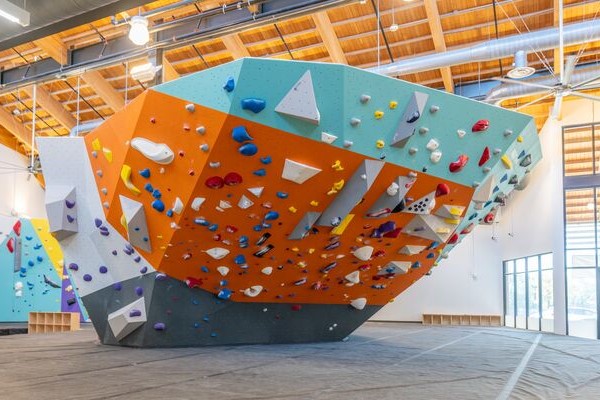 The Hill's Megaprow
The Hill's Megaprow
come up with a game plan
Once you’ve identified the source of your fear, let's figure out how to address it in manageable steps.
if you’re afraid of falling…
If falling on overhangs has you shaking mid-route, one of the tips we shared in a previous article about overcoming your fear of falling is to experiment with your falls.
If you’re climbing on top rope, communicate with your belay partner and let them know you plan to practice falling. Next, climb high enough up the steep wall so that you’re higher than your belayer and then practice falling—from different angles, on different holds, etc. The more you practice, the more you’re likely to feel comfortable with the idea of falling on overhangs.
If you’re bouldering, knowing how to fall will likely easy your fear of falling. Want more tips on how to fall in the bouldering cave? Check out our Intro to Bouldering class at your local gym. Simply go to our locations page, select your gym location and head to the calendar page for upcoming climbing classes.
If you’re lead climbing, head up the steep wall several bolts and clip into the fourth bolt. Get in a position so that clip is at your waist and then take a small fall. Practice that as many times as you need to feel more comfortable with falling on steeper terrain. Then, gradually climb a little higher and increase the size of your falls from there.
Check out our Intro to Lead Climbing class, Intro to Lead Climbing LAB class, or free Fear of Falling clinic for more tips on feeling more comfortable falling on lead. Go to our locations page, select your gym location and head to the calendar page for upcoming climbing classes and clinics.
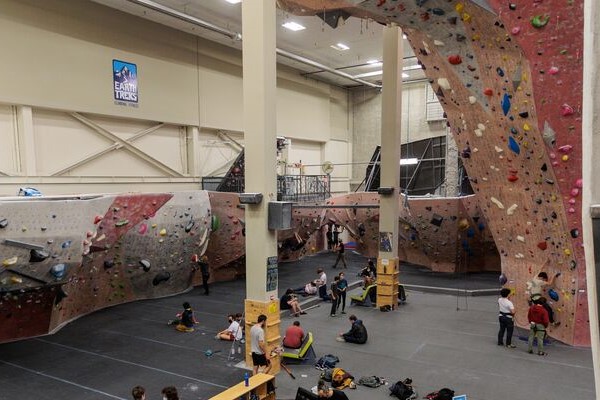
Rockville's Gnar Wall
if you’re worried about climbing on crimps on overhangs…
Sometimes we hear that it’s not just the overhangs that are hard to overcome, it’s climbing crimps on overhangs (as if climbing overhangs wasn’t hard enough!).
Climbing crimps on overhung routes can be really intimidating if you’ve never done it. One of the best ways to get over that fear is to…climb steep routes with crimpy holds. I know, I know—that’s probably not the quick fix, magical solution you were hoping for.
For many, I’ve found their fear of overhangs isn’t based on personal experience. If rock climbing on vertical terrain is already hard, of course you might look up at a steep route and assume it’s even harder.
Well, why not find out for yourself? Look around the gym for an easier crimpy overhung route or problem and give it a go—you may surprise yourself!
However, if you’re looking to build finger strength for crimpy climbing on any wall, it could be a good idea for you to incorporate some hangboarding exercises into your routine. Looking for some hangboarding routines? We’ve got some great ones.
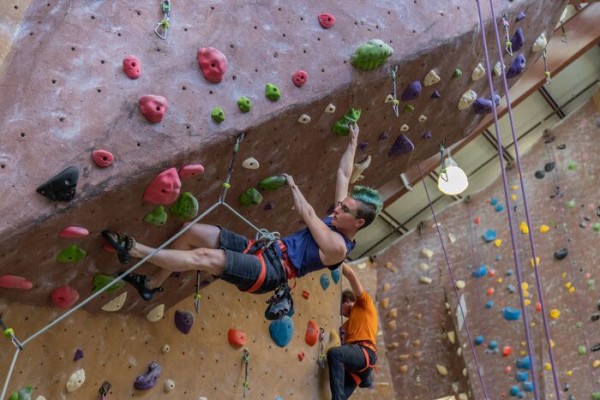 Sunnyvale's Constant Wall
Sunnyvale's Constant Wall
if you’re worried you aren’t strong enough to climb overhangs…
When I ask people why they’re afraid of overhangs, the response I hear most is ‘I’m not strong enough to climb overhangs!’
It’s true, climbing steep terrain does require a certain amount of endurance, but one of the only ways to get that kind of endurance is… to practice climbing on steeper walls. It may be hard at first, but stick with it—I promise that the more you get on overhangs, the easier you’ll find them.
Beyond that, there are some definite technique tips that will help you conserve energy on steeper terrain. Turning your hips into the wall when climbing steep terrain will keep your arms straight (which will conserve energy) and will also give you some extra inches to help you reach far away holds.
For more technique tips for climbing steeper terrain, check out our Intro to Technique classes. Simply head to our locations page, choose your gym, and then view the calendar for upcoming Intro to Technique classes.
Go to our locations page, select your gym location and head to the calendar page for upcoming technique-focused climbing classes.
Slowly, but surely you’ll gain endurance, muscle memory, and confidence—you’ll be fearlessly powering through overhangs in no time!
______________________________________________________
Ezra Park is one of our climbing coaches at our Hampden location. For more 1:1 attention coaching attention, reach out to one of our climbing coaches by filling out our form.
Check out our climbing classes for more tips on climbing overhangs by checking out the climbing class calendar at your local gym's climbing website.
